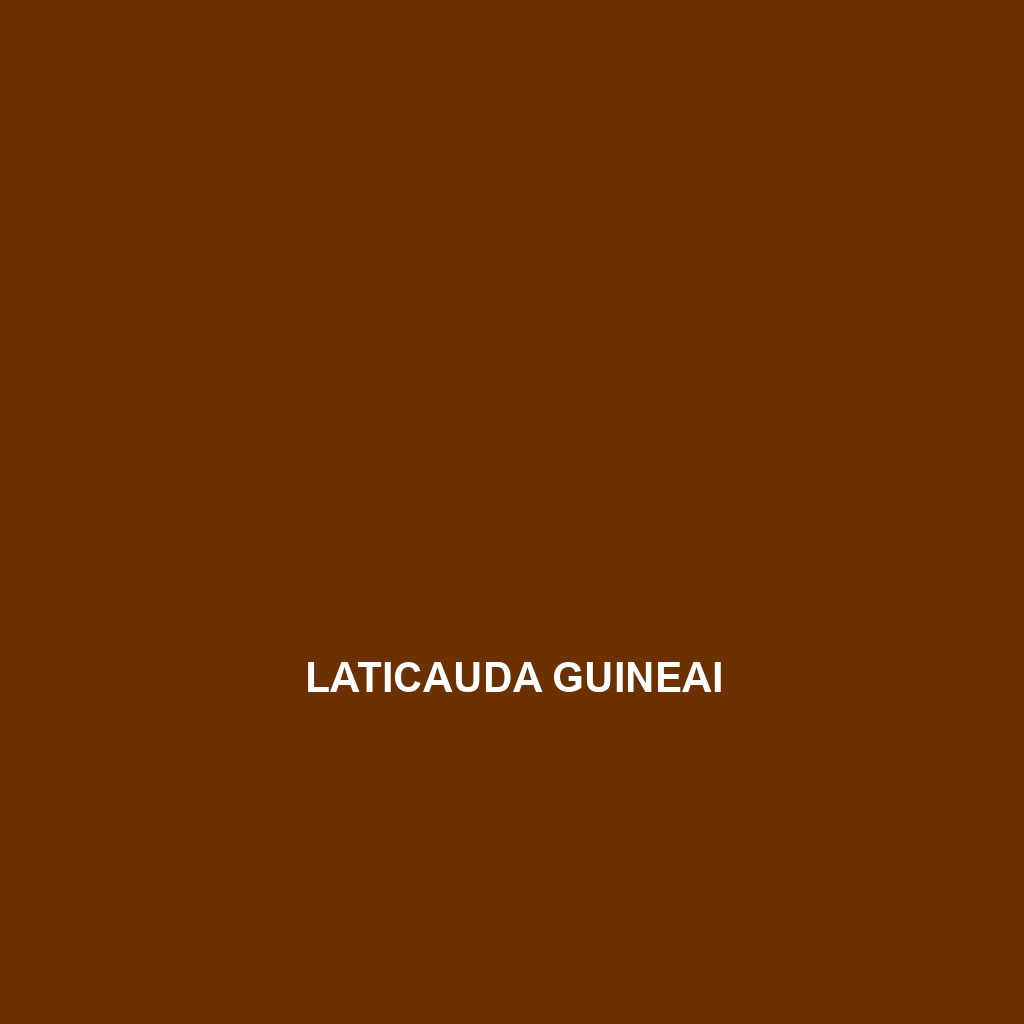Common Name
Laticauda frontalis
Scientific Name
Laticauda frontalis
Habitat
Laticauda frontalis, commonly known as the yellow-lipped sea krait, primarily inhabits coastal regions of the Western Pacific Ocean. This marine snake is predominantly found in countries like Indonesia, the Philippines, and New Caledonia. It thrives in tropical environments characterized by coral reefs and shallow waters. The surrounding habitats include areas enriched with sandy substrates, rocky outcrops, and seagrass meadows. The climate is generally warm, which fosters diverse marine ecosystems. These environments not only provide shelter but also abundant food sources for Laticauda frontalis.
Physical Characteristics
Laticauda frontalis can be easily recognized by its distinct coloration and physical features. This species typically reaches lengths of 1.2 to 1.5 meters, though some individuals can grow to over 2 meters. Its body is elongated and cylindrical, enabling agile movement in water. The coloration is a striking combination of black and yellow bands, with the yellow-lipped portion giving it its common name. Its flattened tail is adapted for swimming, while its dorsal scales are smooth, aiding in hydrodynamics. The large, prominent eyes and a pair of nostrils positioned on top of its head assist in breathing while the snake is submerged.
Behavior
When it comes to behavior, Laticauda frontalis exhibits fascinating patterns. These sea kraits are primarily nocturnal, hunting at night for their prey. They are often seen basking on rocks or sandy beaches during the day to regulate their body temperature. When breeding season approaches, males engage in complex mating rituals, showcasing their agility and vibrant colors to attract females. Socially, these snakes are generally solitary but may be seen in pairs during mating. Their strong swimming abilities allow them to traverse long distances, often migrating in search of food or suitable nesting sites.
Diet
Laticauda frontalis is a carnivorous species that primarily feeds on various marine organisms. Its diet mainly consists of eels, small fish, and crustaceans. Equipped with sharp, backward-curving teeth, this species captures and holds onto slippery prey effectively. Hunting techniques include lurking and ambushing prey in rocky crevices or seagrass beds, demonstrating agility and precision. The snake’s ability to hunt efficiently in its aquatic environment makes it a formidable predator among its counterparts in marine habitats.
Reproduction
The reproductive cycle of Laticauda frontalis is fascinating and unique among snakes. Mating typically occurs during the warmer months, as the warmer water temperatures enhance reproductive success. After a gestation period of approximately 6 to 7 months, females give birth to live young, a characteristic known as ovoviviparity. Offspring are usually around 30 centimeters long at birth and are independent from the moment they emerge. Parental care is absent; thus, young kraits must learn to feed and survive on their own immediately.
Conservation Status
According to the International Union for Conservation of Nature (IUCN), Laticauda frontalis is currently listed as “Least Concern.” However, it faces threats from habitat destruction, pollution, and climate change, which can affect its breeding and feeding grounds. Conservation efforts, although limited, are essential to mitigate these threats and maintain a stable population. Protective measures for coastal habitats and increased awareness of marine ecosystems can significantly contribute to the longevity of this species.
Interesting Facts
One of the most intriguing aspects of Laticauda frontalis is its unique adaptation to life both in and out of water. Unlike many serpentine species, it can be submerged for extended periods—up to several hours—while hunting for food. Furthermore, this snake possesses a remarkable ability to tolerate saltwater, allowing it to thrive in diverse environments. Their striking coloration is not only beautiful but also serves as a warning to potential predators about their venomous nature, which is relatively mild but still effective for hunting purposes.
Role in Ecosystem
Laticauda frontalis plays a crucial role in maintaining the balance of its marine ecosystem. As a carnivorous predator, it helps regulate the populations of the species it feeds on, contributing to a healthy marine food web. Additionally, the yellow-lipped sea krait serves as prey for larger marine animals, thus linking the species further into the ecosystem dynamics. Its presence in coral reefs and tropical marine habitats signifies a well-functioning environment, making it an important indicator species for ecological health.
